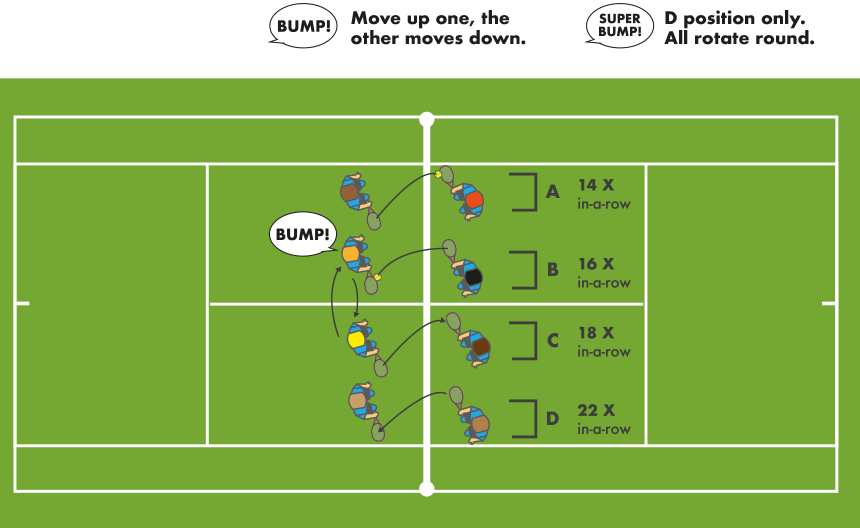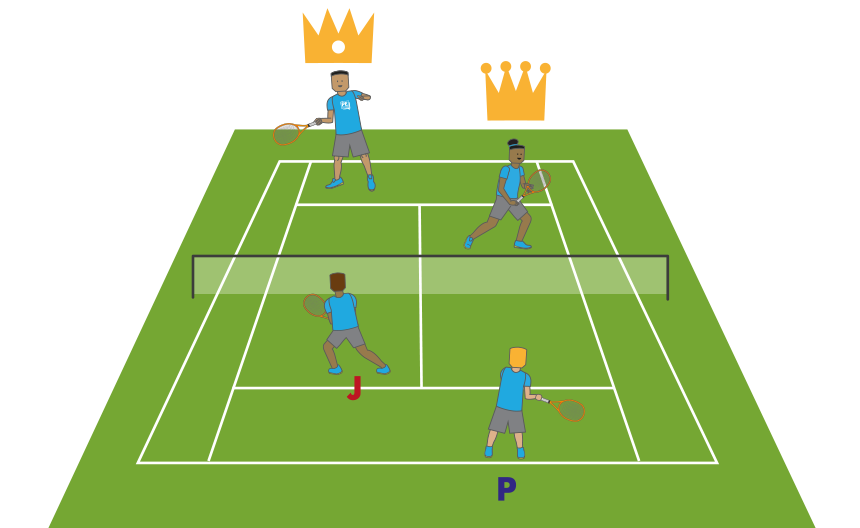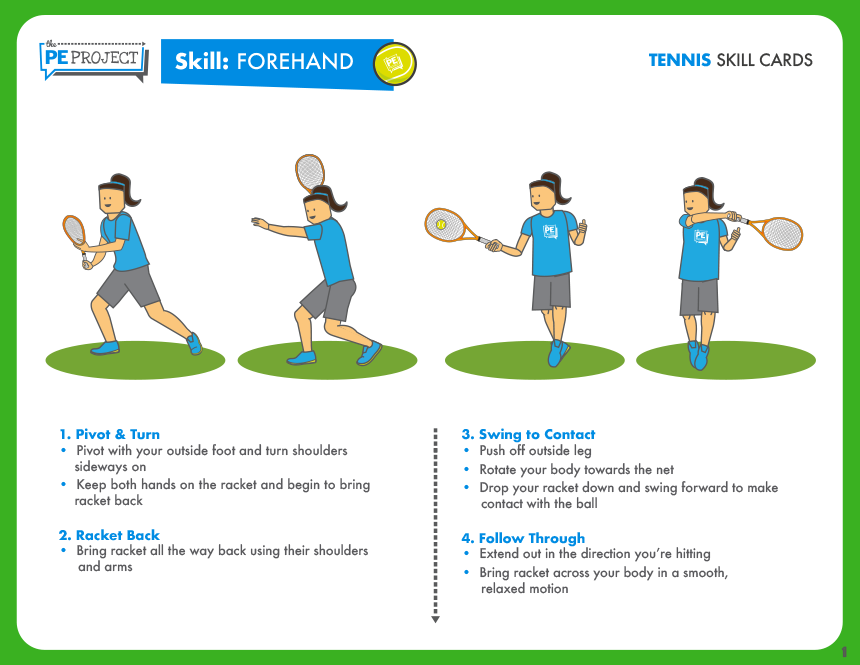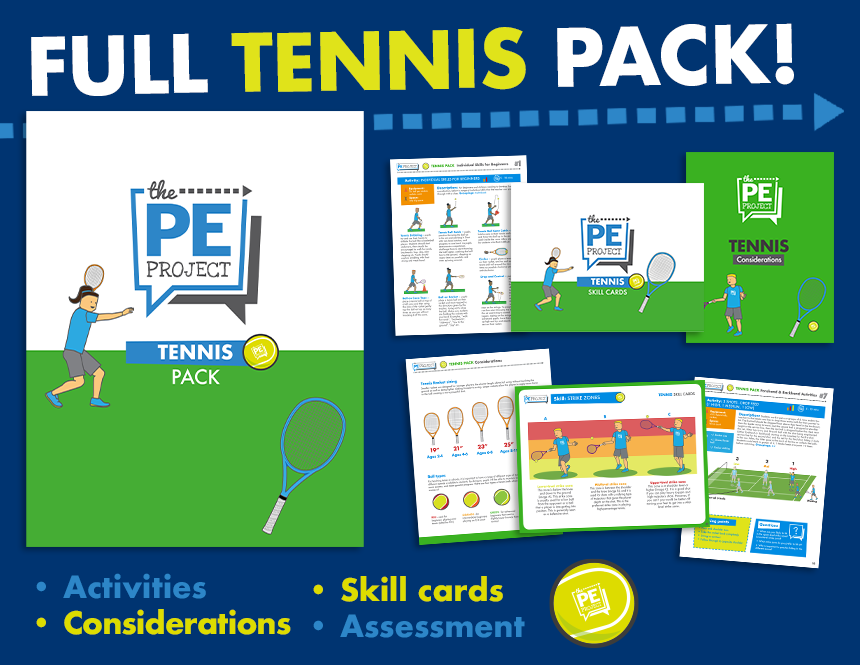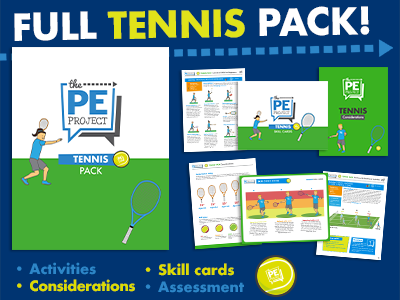When teaching Tennis in Physical Education lessons, it is helpful to have a range of activities, teaching models and styles in the toolbox to help ensure students make great progress. Tennis lessons can be delivered in a range of ways depending upon the age, group size, resources available and your level of knowledge of the game.
Due to the complexity of tennis, most PE classes will have a vast disparity of abilities. From students who have been coached for years to those who may have never played in their lives. Thus, you will need a range of activities and tasks in order that all students are optimally challenged. From individual skill activities, cooperative tasks and rallies, to skill specific activities. It may also be advantageous with older students to utilize the experience in the class by adopting a 'Cooperative Learning' teaching model such as 'Jigsaw'. By which, students can be in mixed ability teams/base groups where they practice and develop skills together cooperatively. After they can compete against members from other teams/base groups of similar abilities . Whereas, with less able students it may be more beneficial to use a more 'traditional' teaching model where pupils progress through a range of teacher led activities and skills before progressing to playing games.
Below are a few Tennis activities, example skill card and teaching considerations taken from the ‘Full Tennis Pack’ that you can use in your lessons.
Description: four pairs facing each other either side of the net. Pair A aim is to volley the ball 14 times in a row, Pair B = 16x, Pair C = 18x, Pair D = 22x. All volleys start at the same time, the first pair to make their specified number in a row calls ‘bump!’, in this case the winning pair bumps up one space, and the other team bumps down one space. The aim is to get to the top position and get 22 volleys before anyone else. If this happens, your pair gets one point and then performs a super bump i.e., they go to position A, and everyone moves up one space. Good competitive game, can be used for ground strokes too.
Teaching Points
- Use a “chopper/axe” grip
- React to the side ball is coming at you
- Use a split step and step into the shot
- Drive your arms forward and fast
Questions
- When is a good time to use a volley?
- What do you aim the ball when volleying?
- Why is volleying an important skill to develop in tennis?
Description: Pupils are in groups of 4-7 and start in one of four positions ‘King’, ‘Queen’, ‘Jack’ or ‘Pauper’. The game starts with a rally serve by the pauper (serve doesn’t have to be diagonal), and the ball is played as a doubles game until the point is won. Whichever, player loses the point goes off the court and a new pauper enters. If the King loses the point, then every player moves up (Queen becomes King, Jack becomes Queen and so on). If the Pauper loses the point, then players don’t move up to a new position, but goes to the back of the line. The aim of the game is to get to the King’s position and accumulate as many wins as possible as King.
Alternative: Alternatively, instead of a rally serve, the ball could be fed in from the net by a fellow student waiting their turn or by a teacher. See positions below:
Teaching Points
- Dribble with head up
- Dribble below waist
- Alternate between hands
- Avoid dribbling violations (carrying, double-dribble, travelling)
Questions
- Where is the best contact point?
- How do you hit the ball higher or lower?
- How can you make the ball move in different directions?
Skill Cards: When teaching Tennis it can be extremely useful for students to use skill cards to deepen their understanding of complex skills. For example, when trying to teach students how to execute a Forehand groundstroke they could use the above skill card to learn about the technique with a partner. Then they can take turns practicing the skill whilst their partner observes and gives feedback. This is an example of a 'Reciprocal Teaching Style' which you can learn more about in our 'Teaching Styles' article.
Teaching Considerations: When teaching any activity to children it is important to consider: What grade are they in? What type of ball should they use? How long should the Tennis racket be? Court size? Net height? We hope that the above table will help you answer those questions quickly and confidently.
The Full Tennis Pack
Would you like more Tennis activities? Download the Full Tennis Pack with over 40 Tennis activities that are appropriate for using in PE lessons. Our pack will help you deliver high-quality Tennis lessons for Phys Ed! It has been developed by highly-qualified and experienced PE teachers for specialists and non-specialists alike who want to deliver the best Tennis lessons where students can make exceptional progress.
In the Full Tennis Pack by the PE Project you will find:
- Over 40 Tennis activities
- Skill Cards
- Lesson Plans
- Assessment Criteria for Elementary, Middle-School, and High-School
- Tennis Rules
- Non-doer sheets
- Plus lots of additional extras like questions, teaching recommendations, differentiation strategies.


